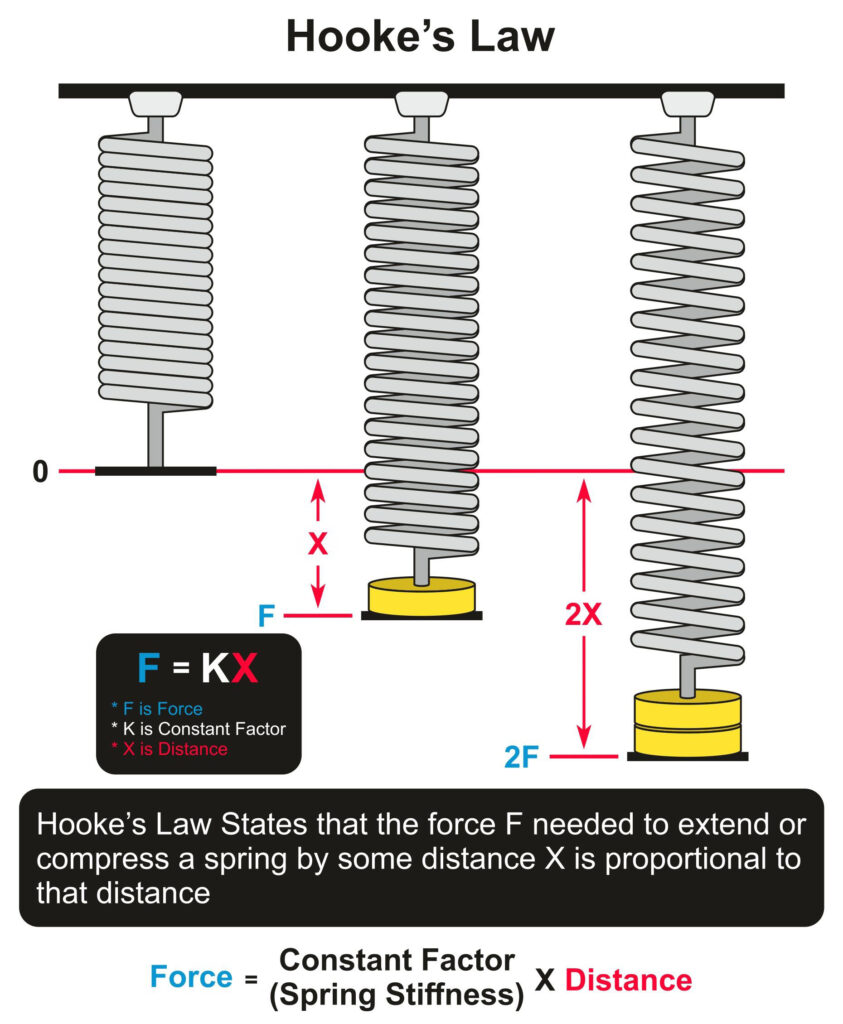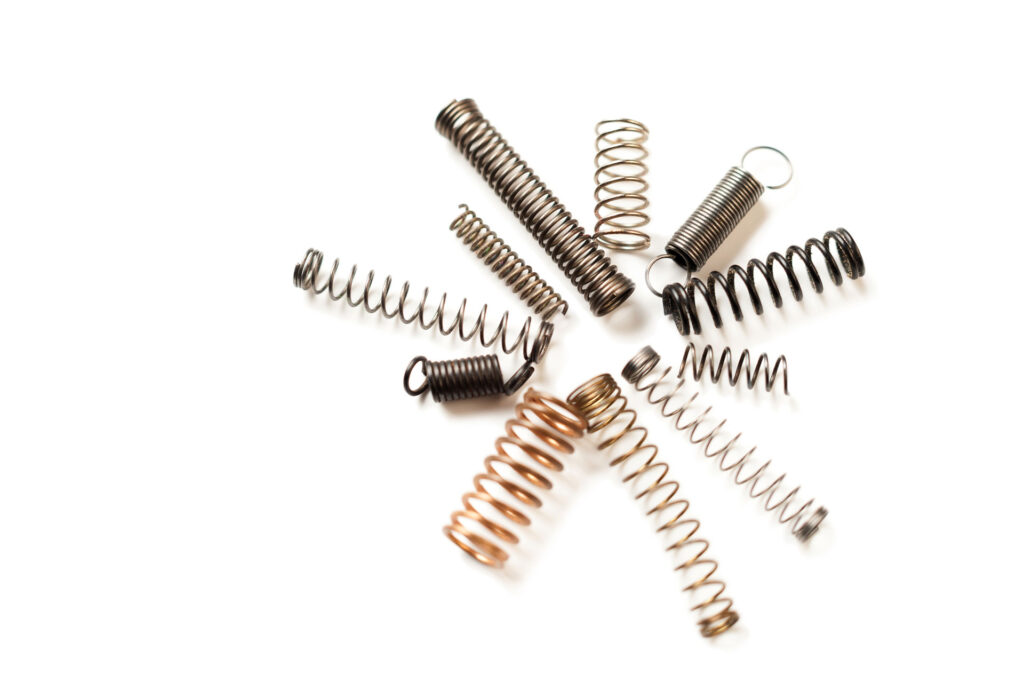The spring is an extremely useful mechanical device with countless implementations and applications. And it is more than likely that you have used at least one device which required a spring to properly function within the past day, if not the past few hours. Today we are going to discuss the science behind the spring. The laws of physics define how each type of spring works, providing us with a blueprint on the best ways to create high-quality springs, purpose-built for each of their specific functions.
Hooke’s Law and the Physics of Springs
In the latter part of the 17th century, British physicist Robert Hooke came up with a scientific equation which helped calculate the amount of force necessary to compress or extend a spring by a specific distance. Today, Hooke’s Law tends to be grouped into the modern theory of elasticity, generalizing his theory for the masses. While Hooke’s Law is a specific scientific calculation, the modern theory of elasticity simply states that solid materials will deform when an external force is applied to it, reverting to their original form once that force has been taken away.

How Do Compression Springs Work?
Shaped like a helix, compression springs are wire mechanical devices that both store and release energy. When a force or load is exerted onto the spring, its coils compress, pushing against that force in attempt to revert to the spring’s initial length. Compression springs are actually one of the most efficient energy storage devices in existence.
Some Common Compression Spring Applications
- Engines
- Home appliances
- Lawn mowers
- Medical devices
- Electronic devices
- Retractable pens
How Do Extension Springs Work?
Commonly attached to separate components at both ends, extension springs create a resistance to the pulling force exerted by those other components. So, when the attached components begin to pull away, further separating themselves from the spring’s core, the extension spring pulls back, reverting to its original form.
Some Common Extension Spring Applications
- Motor vehicles
- Garage doors
- Trampolines
- Outdoor furniture
- Various tools (i.e. vise-grips)
- Certain children’s toys
How Do Torsion Springs Work?
Designed to react against a twisting motion or force, torsion springs are usually attached to separate components which turn around the spring. And when those separate components are revolving around, the torsion spring exerts force to push the components back to their starting position. The easiest way to describe how a torsion spring functions is “squeeze-to-open”, like a clothespin.
Some Common Torsion Spring Applications
- Clothespins
- Motor vehicles
- Keyboards
- Mattresses
- Door handles
- Analog watches
- Clipboards

The Right Spring for the Job
At Ajax Springs, all of our springs are manufactured to meet the specific standards required to properly function for their designated applications. The science of springs is like a second language to us and we are happy to share the knowledge. Contact us today to learn more about all the high-quality springs we have to offer.


